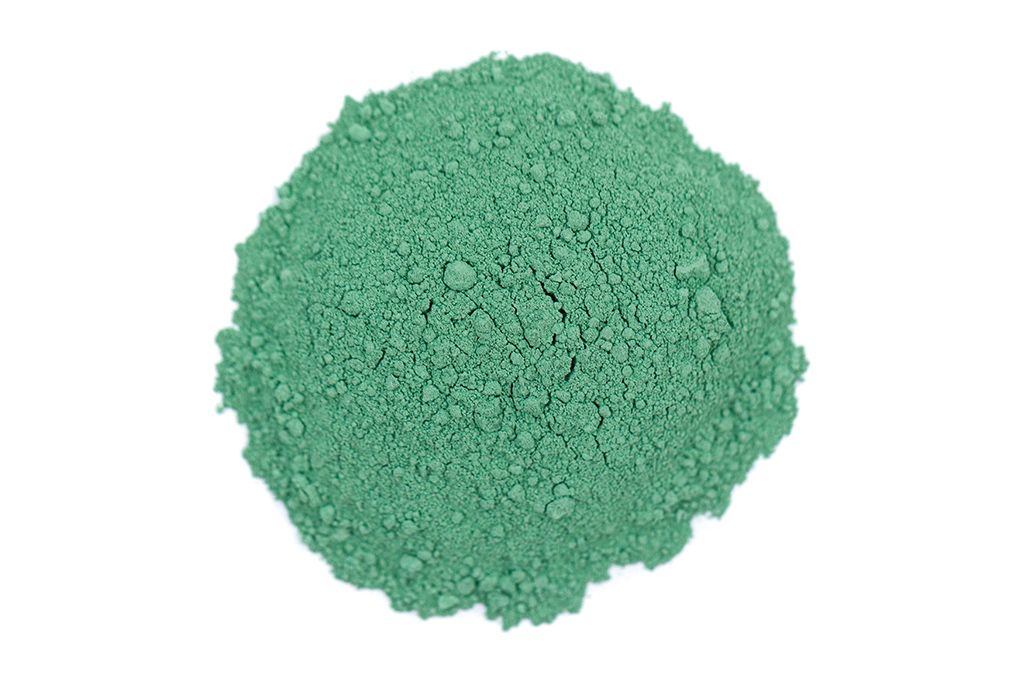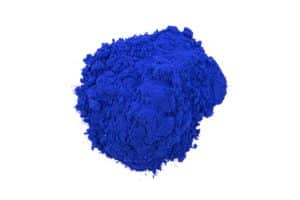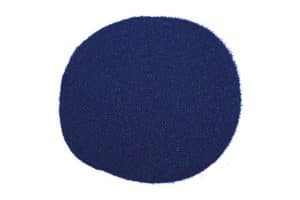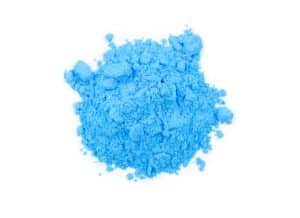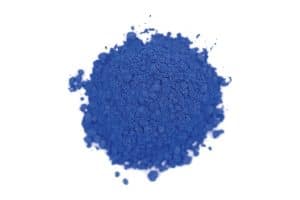Description
Chemical composition : CuCO3.Cu(OH)2
10300 Malachite, 0 – 120 µ
10310 Malachite, 0 – 80 µ
10341 Malachite MP, 100 – 125 µ
10343 Malachite MP, 80 – 100 µ
10344 Malachite MP, 63 – 80 µ
10345 Malachite MP, 0 – 63 µ
10346 Malachite MP, 0 – 20 µ
103600 Malachite fibres, 0 – 120 µ
103601 Malachite fibres, 0 – 80 µ
103700 Malchite, Arabian, 0 – 120 µ
103701 Malchite, Arabian, 0 – 80 µ
1674108 Malachite MATSUBA-ROKUSYOU, Nr. 8
1674110 Malachite MATSUBA-ROKUSYOU, Nr. 10
1674112 Malachite MATSUBA-ROKUSYOU, Nr. 12
1674114 Malachite MATSUBA-ROKUSYOU, Nr. 14
44400 Malachite synthetic
Malachite is perhaps the oldest known bright green pigment. It is the natural basic copper carbonate and is similar in
composition to the blue basic copper carbonate, azurite, except that it contains a greater amount of combined water.
Like azurite it occurs in many parts of the world and is associated with secondary copper ore deposits.
Malachite was used in ancient Egypt for eye-paint as early as predynastic times and was found on Fourth Dynasty tomb
paintings. Curiously, malachite was not used in paintings extensively as azurite in Europe. It is also less frequently
mentioned in written sources. Malachite was found to be used extensively along with azurite in Western Chinese
paintings of the ninth to the tenth centuries. It was also reported on seventh- to eight-century Buddhist wall paintings in
Japan.
Classical and medieval writings refer to malachite as “chrysocolla”, a word derived from the Greek words for gold and
glue because the ancients used it in soldering gold. The current term chrysocolla was given my mineralogists to the
blue-green natural cryptocrystalline hydro silicate of copper (see chrysocolla). Malachite is prepared as a pigment by
careful selection, grinding and sieving. In transmitted light coarse particles are dark green and fine particles are a pale
green. If the particles are too finely ground it becomes too pale for practical use. Because malachite is produced by
crushing and grinding, all the particles have a fractured appearance. Many larger particles have a fibrous structure and
it is not uncommon to find particles of associated minerals such as azurite, chrysocolla and cuprite. Under the
microscope malachite particles show a pale greenish color by transmitted light.
Malachite is stable to light and normal atmosphere. Malachite has a moderately low refractive index, and is thus more
satisfactory in tempera and in an oil-medium.
Malachite is also suitable for the technique of true fresco. It is the most important green up until the 18th century. Its
properties are similar to azurite: it turns yellowish green in oil, is permanent in frescos when mixed up fresh with lime,
and is suitable for tempera.
Our raw malachite is from eastern Congo in Africa.
This is a very crude ore. We first separate by hand, then we separate by shaking table method, and finally by levitation.
The MP-process is orientated on old recipes of European and Chinese treatments of mineral pigments. This process
inactivates the reactivity of the minerals – to a certain extent – and “cleans” the surface.
On every crystal there are points of lower perfection. These points have a higher reactivity. The MP-process covers and
reduces the reactivity at these areas. Little particles are attached to bigger particles, making the separation of different
size particles difficult. The MP-process facilitates this separation.
